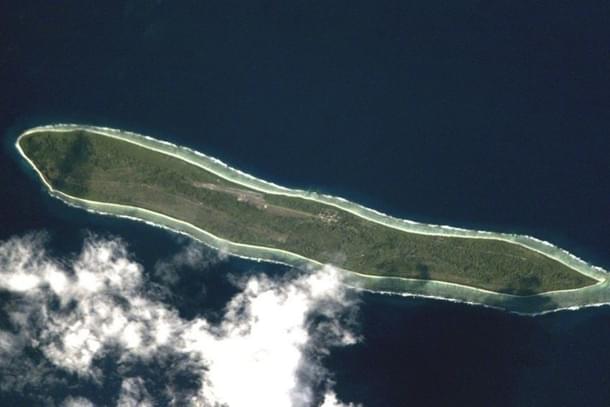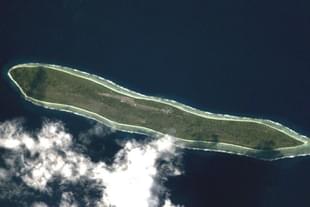Defence
Agalega 'Airstrip' Gives India A Leg Up In The Indian Ocean Power Struggle Against China
Ujjwal Shrotryia
Mar 01, 2024, 02:19 PM | Updated 03:54 PM IST
Save & read from anywhere!
Bookmark stories for easy access on any device or the Swarajya app.


The inauguration of the new airstrip and jetty at the Agalega Island of Mauritius is a shot in the arm for Indian efforts in countering Chinese ambitions in the Indian Ocean Region (IOR).
Prime Minister Narendra Modi, via a video conference along with his Mauritius counterpart Pravind Jugnath yesterday (29 February), inaugurated the new airstrip and jetty made by Indian assistance, apart from six community development projects.
First conceived in 2005 and formalised during Prime Minister Modi's visit to Mauritius in 2015, the plan aimed to set up, upgrade, and develop the island's infrastructure, including upgrading the 10,000-foot runway to accommodate large commercial aircraft like the Boeing 737-900 and Airbus A-321.
Additionally, the plan included the construction of a port near the existing jetty, structures for communications and intelligence installations, and a transponder system to identify ships as friend or foe.
Despite facing opposition from domestic political parties in Mauritius, construction began in 2019.
Situated 1,100 kilometres north of the main Mauritius island, Agalega's location holds geostrategic significance, positioned in the heart of the southwest Indian Ocean with neighbouring Seychelles to the north, Maldives, Diego Garcia (a US base in the Indian Ocean), and Chagos Island to the east, and Madagascar, the east coast of Africa, and the Mozambique Channel to the west.
This strategic positioning allows India and Mauritius to monitor commercial and military activities passing through the Indian Ocean.
Last year, commercial imagery indicated that large hangars and supporting infrastructure capable of housing P-8I sized aircraft are coming up at the newly-built airstrip.
These aircraft, along with the recently ordered MQ-9B Sea Guardian drones from the US, will significantly enhance the Indian Navy's reach when operated from Agalega Islands.
In addition to aviation facilities, the new larger jetty, alongside the existing one, will support and service Indian Navy ships patrolling the Indian Ocean Region.
It can easily cater to the mission-based deployments of Indian Navy, for instance, in January, nearly ten Indian Navy ships were in the area to ensure safe passage for commercial shipping, protecting against piracy, drone, and missile attacks originating from Yemen.
The Chinese, on the other hand, who have their first overseas military base in Djibouti at the east coast of Africa and Riam base in Cambodia in southeast Asia, are expected to have a permanent presence in IOR in the next 10 to 15 years.
They already have significant military presence in IOR in the garb of counter-piracy patrols. These counter-piracy patrols, however, were conveniently absent when the drone and missile attacks of Houthi militia from Yemen and piracy attempts on commercial shipping were at its peak in the beginning of this year.
The Chinese are flexing their muscles in the Indian Ocean, aiming to challenge the pre-eminence of Indian Navy, and playing a game with India for battle of influence. With the win of the pro-China leader in Maldives, Mohammed Muizzu, the Chinese won the first round of this year.
A Chinese spy ship also docked in Male this week.
However, India scored a win when Sri Lanka banned Chinese spy ships from docking on its port for one-year.
Regardless of these games, this base coupled with French Reunion Island (on which India has deployed P-8I's several times under the logistics exchange agreement) and the new airstrips and facilities coming on both the Lakshadweep and Andaman and Nicobar islands will force the Chinese to think twice to do any misadventure lest they lose their vital maritime lifeline — the Malacca-straits.
Staff Writer at Swarajya. Writes on Indian Military and Defence.




